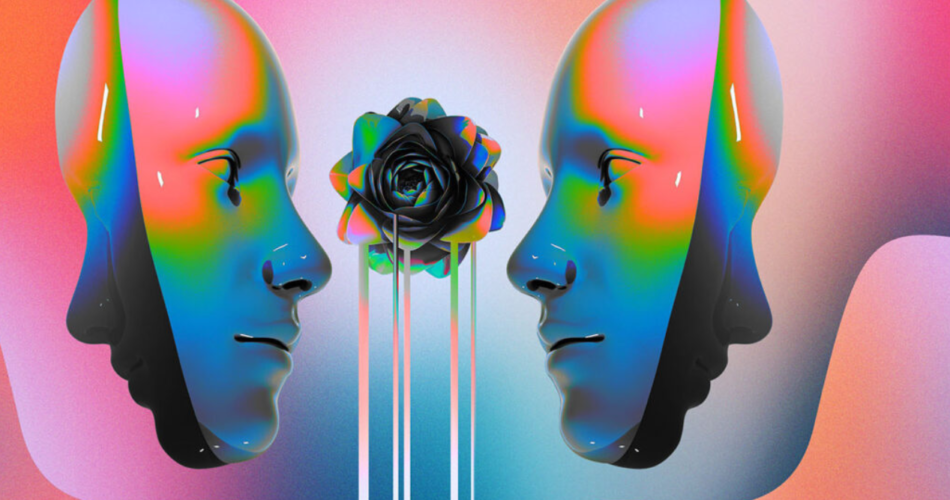The internet has undergone significant transformations since its inception, evolving from static web pages (Web 1.0) to interactive platforms (Web 2.0). Now, we stand on the brink of another revolutionary shift: Web3. Powered by blockchain technology, Web3 promises a decentralized, user-centric internet where individuals have greater control over their data, identity, and digital assets. This article explores the concepts of Web3 and blockchain, their potential applications, challenges, and the future they envision.
Contents
What is Web3?

Web3, often referred to as the “decentralized web,” is the next iteration of the internet. Unlike Web 2.0, which is dominated by centralized platforms like Google, Facebook, and Amazon, Web3 aims to create a more open, transparent, and equitable digital ecosystem. Key characteristics of Web3 include:
- Decentralization: Web3 eliminates the need for intermediaries by leveraging blockchain technology. Data and applications are distributed across a network of nodes, reducing the control of centralized entities.
- User Ownership: In Web3, users own their data, digital assets, and identities. This is achieved through cryptographic keys and decentralized identifiers (DIDs).
- Trustless and Permissionless: Web3 operates on trustless systems where transactions and interactions are verified by consensus mechanisms rather than relying on third parties. It is also permissionless, meaning anyone can participate without needing approval.
- Interoperability: Web3 emphasizes seamless interaction between different platforms and blockchains, enabling users to move assets and data across ecosystems.
The Role of Blockchain in Web3
Blockchain is the foundational technology that enables Web3. It is a distributed ledger that records transactions in a secure, transparent, and immutable manner. Here’s how blockchain powers Web3:
1. Decentralized Infrastructure
- Blockchain eliminates the need for centralized servers by distributing data across a network of nodes. This ensures resilience, transparency, and resistance to censorship.
- Examples: Ethereum, Solana, and Polkadot.
2. Smart Contracts
- Smart contracts are self-executing agreements with terms directly written into code. They automate processes and enable trustless transactions.
- Use cases: Decentralized finance (DeFi), supply chain management, and digital identity.
3. Tokenization
- Blockchain enables the creation of digital tokens, which can represent assets, ownership, or access rights. These tokens are stored in digital wallets and can be traded or used within applications.
- Examples: Cryptocurrencies (Bitcoin, Ethereum), NFTs (Non-Fungible Tokens), and utility tokens.
4. Consensus Mechanisms
- Blockchain networks rely on consensus mechanisms like Proof of Work (PoW) and Proof of Stake (PoS) to validate transactions and maintain security.
- Emerging mechanisms: Proof of History (PoH) and Proof of Authority (PoA).
Key Applications of Web3 and Blockchain
Web and blockchain are already transforming various industries. Here are some of the most promising applications:
1. Decentralized Finance (DeFi)
- DeFi leverages blockchain to create open, permissionless financial systems. Users can lend, borrow, trade, and earn interest without relying on traditional banks.
- Examples: Uniswap, Aave, and Compound.
2. Non-Fungible Tokens (NFTs)
- NFTs are unique digital assets that represent ownership of art, collectibles, and even real-world assets. They are stored on the blockchain, ensuring authenticity and provenance.
- Use cases: Digital art, gaming, and intellectual property.
3. Decentralized Autonomous Organizations (DAOs)
- DAOs are community-driven organizations governed by smart contracts. Members vote on decisions, and the rules are enforced automatically.
- Examples: MakerDAO, Aragon, and Friends With Benefits.
4. Digital Identity
- Web3 enables self-sovereign identity, where users control their personal data and share it selectively using decentralized identifiers (DIDs).
- Use cases: KYC (Know Your Customer), healthcare, and voting systems.
5. Gaming and Metaverse
- Blockchain is revolutionizing gaming by enabling true ownership of in-game assets and creating play-to-earn models.
- Examples: Axie Infinity, Decentraland, and The Sandbox.
6. Supply Chain Management
- Blockchain provides transparency and traceability in supply chains, reducing fraud and ensuring ethical practices.
- Examples: IBM Food Trust, VeChain.
Challenges and Limitations
While Web3 and blockchain hold immense potential, they also face significant challenges:
- Scalability
- Many blockchain networks struggle with scalability, leading to high transaction fees and slow processing times.
- Solutions: Layer 2 protocols (e.g., Polygon, Optimism) and sharding.
- Energy Consumption
- Proof of Work (PoW) blockchains like Bitcoin consume significant amounts of energy, raising environmental concerns.
- Solutions: Transition to Proof of Stake (PoS) and renewable energy.
- Regulation
- The decentralized nature of Web3 poses challenges for regulators, particularly in areas like taxation, fraud prevention, and consumer protection.
- Solutions: Collaborative frameworks between governments and the blockchain community.
- User Experience
- Web3 applications often have steep learning curves and require users to manage private keys and wallets.
- Solutions: Improved UX/UI design and wallet abstraction.
- Security
- While blockchain is inherently secure, smart contracts and decentralized applications (dApps) can be vulnerable to exploits.
- Solutions: Auditing, formal verification, and bug bounty programs.
The Future of Web3 and Blockchain
The future of Web3 and blockchain is incredibly promising. Here are some trends to watch:
- Mass Adoption
- As user-friendly interfaces and infrastructure improve, Web3 is expected to reach mainstream adoption.
- Interoperability
- Cross-chain solutions like Polkadot and Cosmos will enable seamless interaction between different blockchains.
- Integration with AI
- The combination of blockchain and AI could revolutionize areas like data privacy, decentralized decision-making, and autonomous systems.
- Regulatory Clarity
- Governments and regulatory bodies are likely to establish clearer guidelines, fostering innovation while protecting users.
- Sustainability
- The industry is moving toward greener solutions, with many blockchains transitioning to energy-efficient consensus mechanisms.
Conclusion
Web3 and blockchain represent a paradigm shift in how we interact with the digital world. By decentralizing power and giving users control over their data and assets, they promise a more equitable and transparent internet. While challenges remain, the rapid pace of innovation suggests that Web is not just a fleeting trend but the foundation of the internet’s future. As we navigate this transformative era, collaboration between developers, businesses, and regulators will be key to unlocking the full potential of Web and blockchain.
